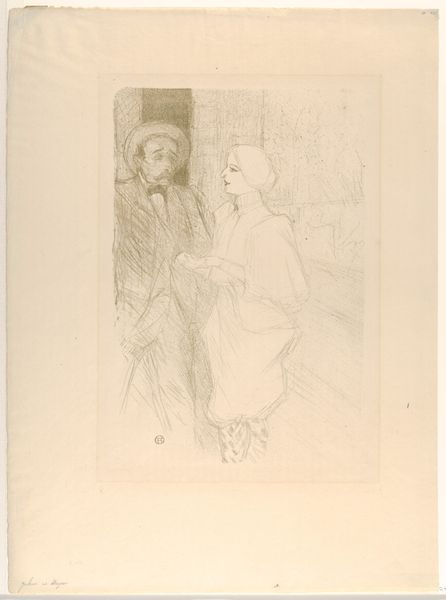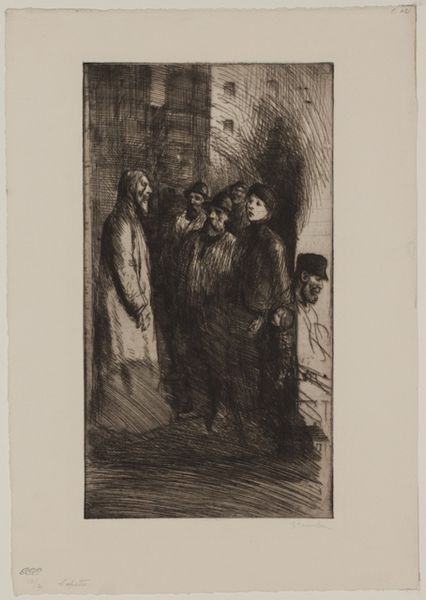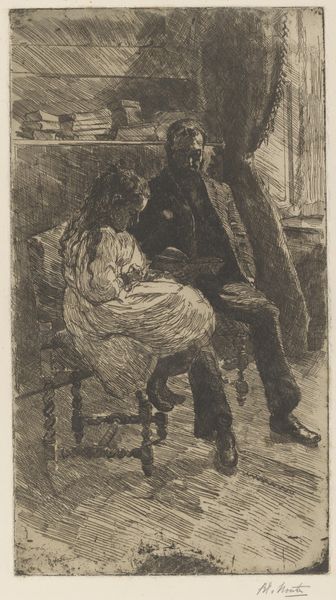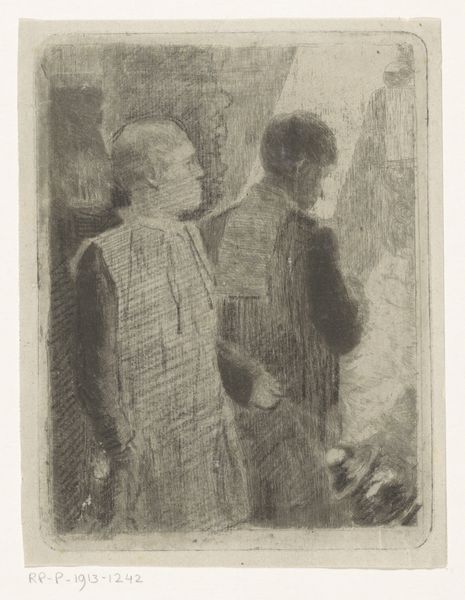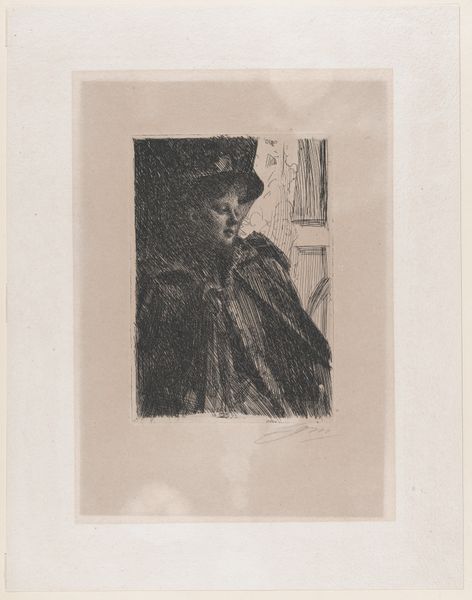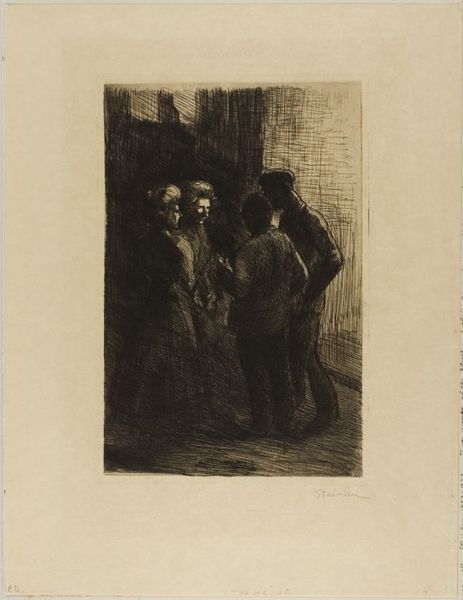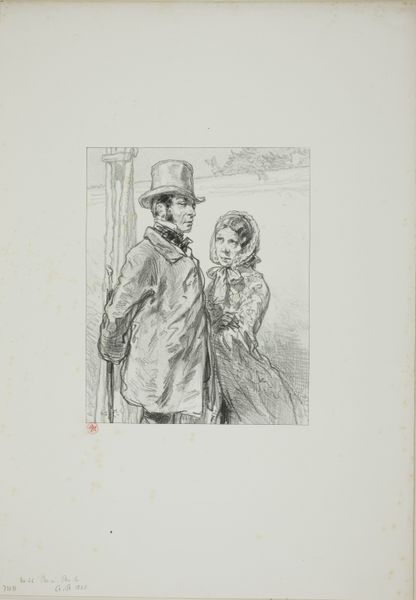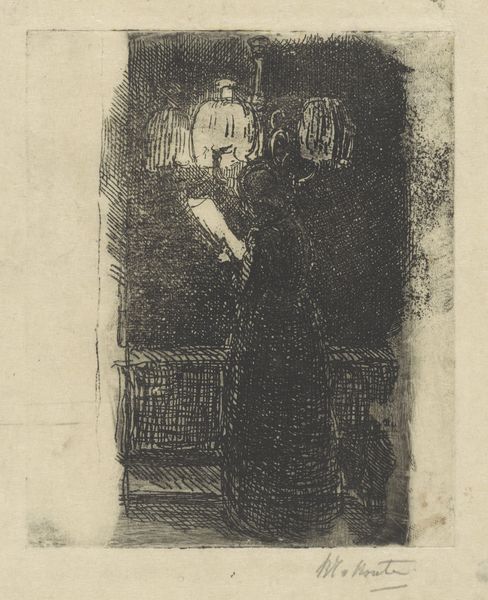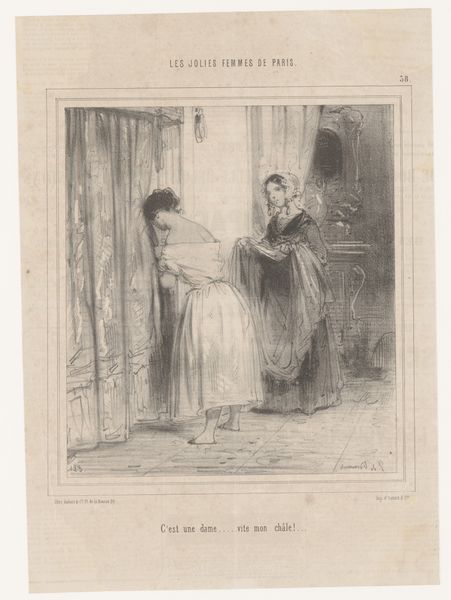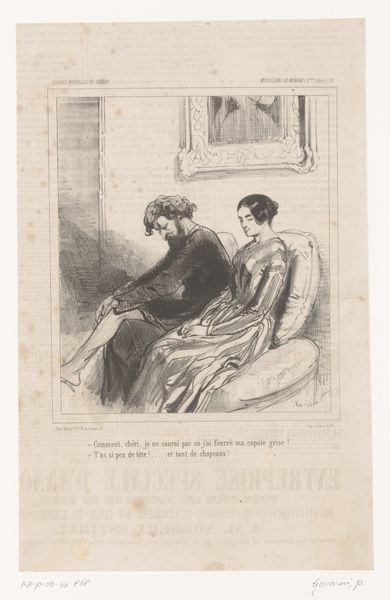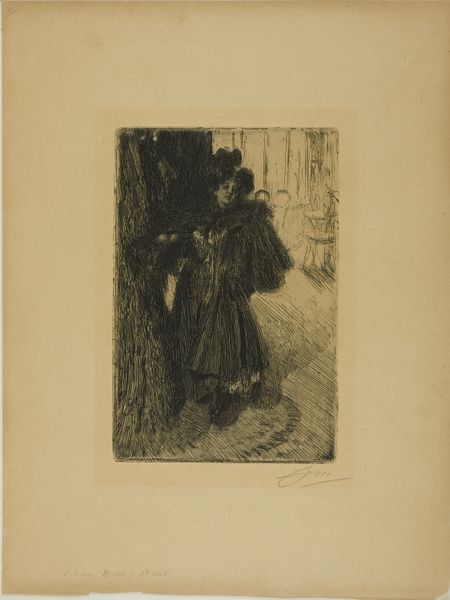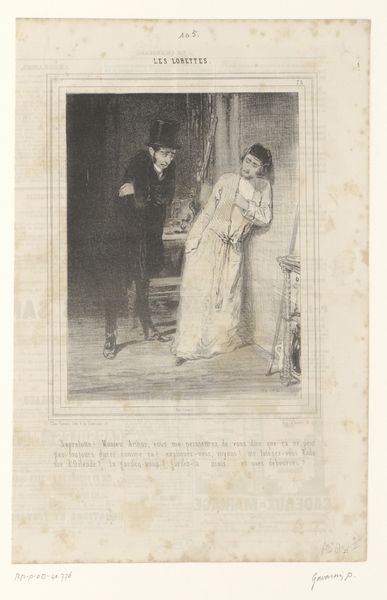
drawing, print, etching
#
portrait
#
drawing
# print
#
etching
#
figuration
#
personal sketchbook
#
academic-art
Dimensions: Plate: 9 7/16 × 7 1/4 in. (24 × 18.4 cm) Sheet: 11 13/16 × 9 7/16 in. (30 × 24 cm)
Copyright: Public Domain
Curator: This is Anders Zorn's etching, "Mr. and Mrs. Atherton Curtis," created in 1906. Editor: There’s something spectral about this. It almost feels like we’re encountering figures from the past emerging from the shadows, partially formed in our collective memory. Curator: The etching technique certainly lends itself to that impression. Zorn was a master of capturing light and texture through incredibly fine lines and cross-hatching. Notice how the differing densities of lines model the forms. Look at the layering in Mr. Curtis's jacket, the varying tonal richness really sculpts its shape. Editor: And how that density contrasts so sharply with Mrs. Curtis, whose pale overcoat almost renders her invisible, and those ghostly figures lingering behind the couple near the doorframe—who are they? Curator: Indeed, it's an interesting compositional choice. Their presence contributes to the work’s spatial depth, yet they appear far less defined than the central figures. Focusing on what we *do* know, Atherton Curtis and his wife were wealthy American art collectors living in Europe. Their patronage shaped the cultural landscape of their time. Perhaps the blurred figures are stand-ins for all the other, less visible, players that allowed their affluence to be what it was. Editor: That’s a very interesting possibility to consider. And let's be clear: portraiture has always been about power, about who gets remembered. Etching, as a reproductive medium, made this image more accessible to a broader public, allowing the Curtis's carefully constructed image to circulate widely. Curator: Exactly. And consider Zorn's signature style: confident, energetic lines that capture not just likeness, but character. The crisp precision alongside soft rendering highlights their class and confidence in society, truly representative of turn-of-the-century society. Editor: Right. Looking at this, I’m also aware of how portraits like this often erase the labor, the histories, and the social structures that allowed these individuals to occupy such prominent positions. It's a gorgeous etching, yes, but it also serves as a potent reminder of whose stories get told. Curator: Yes, it's a confluence of both artistic and societal contexts that shapes our reading of this work, offering a window into a bygone era with considerable artistry. Editor: Leaving us with much to ponder, as viewers navigating our contemporary perspectives within a lineage of complex imagery and artistic decisions.
Comments
No comments
Be the first to comment and join the conversation on the ultimate creative platform.
